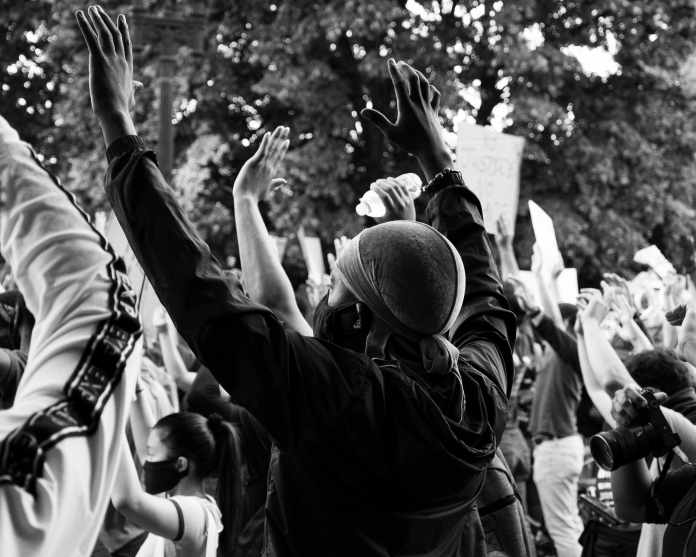As the COVID-19 vaccine rollout continues in the United States and around the world, much discussion is concerned with how the vaccine is being distributed. In the conversations about distribution, the topic of cold chain in vaccine inevitably arises.
Cold chain is the term for the global supply chain that transports and stores goods that have to be kept at specific temperatures. Because the approved COVID-19 vaccines are made from biological material, they have to be distributed through this specific supply chain.
The cold chain has always been important, but its role in vaccine distribution now makes it one of the most important supply chains in history. To help give you a better understanding of how the cold chain works generally and why it is so important now, we’re going to give you some key points to know about it. Here are four factors to understand about the vaccine cold chain.
Table of Contents
1. The current vaccines need to stay very cold
The first thing to know is why the cold chain is even necessary for the vaccine rollout. The vaccine cold chain is needed because of the ingredients in the currently approved COVID-19 vaccines. In the U.S., the first two vaccines to be widely approved for use were the Pfizer-BioNTech vaccine and the Moderna vaccine.
Both vaccines work in the same way, using a biological material called messenger RNA (mRNA) that helps the body make antibodies. This mRNA is extremely fragile and must be transported and stored in a deep freeze until it is ready to be thawed and injected into a patient. For the Moderna vaccine, that deep freeze must be -20° Celsius (-4° Fahrenheit), while the Pfizer vaccine requires a temperature of -70° Celsius (-94° Fahrenheit).
Currently, no vaccines in the late stages of clinical trials can be kept at room temperature for an extended period of time. This means that the cold chain will seemingly be necessary for distribution of these vaccines for the foreseeable future. However, the Johnson & Johnson vaccine only requires normal refrigeration which may reduce the burden on the cold chain that comes from the ultra-low temperature requirements.
2. Data integrity is critical
Due to the ultra-low temperature requirements of the currently approved vaccines, monitoring the precise temperatures of the cold chain is crucial. This is done in 2021 with internet-connected sensors called data loggers. Data loggers are an important tool for monitoring temperature data throughout the cold chain. Dickson’s guide is a helpful resource for understanding data loggers’ capabilities and importance.
These data loggers are part of the Internet of Things (IoT). The IoT refers to any objects (things) connected to the internet. This allows data loggers to report their data to a cloud-based remote monitoring system. From a central location, precise temperatures in the cold chain can be monitored and often adjusted if needed. This makes the cold chain easier to manage, more cost-efficient, and requires less manpower. It also helps ensure that the data is up to required integrity levels so no vaccine doses are compromised.
3. There is a shortage of some materials
To keep the vaccines in the cold chain cold, certain pieces of equipment or materials are required. Due to the sheer size and scope of the vaccine distribution effort in the U.S. alone, the cold chain has faced shortages of key materials needed for vaccine distribution.
Two cold chain supplies that are most needed to transport vaccines are medical-grade deep freezers and dry ice. Both items were in short supply at the end of 2020. Only around 10 companies in the world construct these specialized freezers capable of holding sub-zero temperatures. They simply have not been able to keep up with worldwide demand.
To remedy this, Pfizer created a special temporary shipping cooler that is capable of keeping the vaccine at the required temperature for a short time. This is accomplished with the use of dry ice in the cooler. Unfortunately, we are also experiencing a shortage of dry ice these days. As is the case with the specialized freezers, only 5 or 6 companies in the U.S. supply dry ice so demand is again an issue.
4. Challenges remain but it has been done before
The cold chain faces several other challenges on the road to delivering a vaccine to this country and the world. Companies and governments involved in distribution will have to face several additional challenges. One of these challenges is that deep-freezers require large quantities of reliable electricity to run. Especially in rural or underdeveloped areas, this can put a strain on the electrical grid.
Another challenge is the time-sensitivity of the distribution. Currently, the two approved vaccines both require two doses to be given to a patient, three weeks apart. Any major delays in the cold chain can put the effectiveness of the second dose in jeopardy. One more challenge is that employment of the cold chain is already almost at capacity in 2021. Food and normal pharmaceuticals that travel this way must still be distributed. Finding the balance of getting these things where they need to go while shifting focus to the vaccine is difficult but necessary.
The good news is that this has been accomplished before, on a smaller scale and with even more challenges. An Ebola virus vaccine needs to be kept in a temperature range similar to the COVID vaccines. Even with much less infrastructure than other continents, the cold chain is delivering this life-saving and life-changing vaccine in Africa to increasing success. The latest success story comes from the Democratic Republic of the Congo.
Conclusion
Distribution of the COVID-19 vaccine is critical to getting past this global pandemic and getting life back to some semblance of normal. The cold chain is critical to getting the approved vaccines to the people who need it. You will hear much about the cold chain in the coming weeks and months. Now you know a few of the most important things about this vital supply chain process to help you understand what everyone is talking about.


















